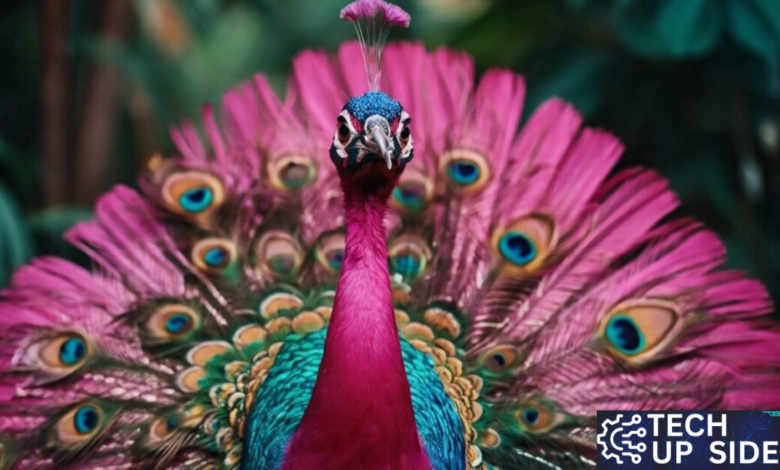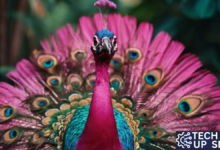How to Spot a Pink Peacock in the Wild: Tips for Birdwatchers

Introduction to Pink Peacocks
Have you ever encountered a pink peacock? These rare and enchanting birds are like something out of a fairy tale, captivating birdwatchers and nature enthusiasts alike. Their striking color sets them apart from the common blue or green varieties, making them a true gem in the avian world. If you’re eager to spot these charming creatures in their natural habitat, you’re in for an exciting adventure. Get ready to explore the fascinating world of pink peacocks—where vibrant hues meet elusive behavior!
Habitat and Behavior of Pink Peacocks

Pink peacocks thrive in lush, tropical environments. They prefer dense forests and open grasslands where they can forage for food. These stunning birds are often found near water sources, where they enjoy cooling off in a dip.
Their behavior is as captivating as their appearance. Pink peacocks are known for their social nature, often seen roaming in small groups or family units. Males display elaborate courtship rituals that include fan-like tail displays to attract mates.
During the day, they forage for seeds, fruits, and insects. At dusk, they roost high up in trees to evade predators. Their calls range from soft coos to loud squawks; each sounds serving a purpose within their social structure.
Understanding their habitat and behaviors can enhance your birdwatching experience immensely. Observing them interact with their environment offers insights into the delicate balance of nature.
Characteristics and Physical Features
The pink peacock is a magnificent bird known for its eye-catching plumage. Its feathers showcase an array of soft pink hues that shimmer in the sunlight. This vibrant coloration sets it apart from the more familiar Indian peafowl.
In addition to their unique color, pink peacocks have elongated tail feathers adorned with iridescent eyespots. These elegant tails span up to six feet when fully displayed during courtship rituals.
Although their body structure is similar to that of other peafowls, the slight variations in size and shape make them stand out even more. Males are typically larger than females.
Another notable feature is their graceful necks and distinctive crests on top of their heads. The combination of these elements creates an enchanting silhouette against any natural backdrop.
Tips for Spotting Pink Peacocks in the Wild
Spotting a pink peacock in the wild can be an exhilarating experience. Start by choosing the right time of day. Early morning or late afternoon often yields better sightings as these birds are more active.
Look for areas with dense vegetation near water sources. Pink peacocks love roaming wetlands and forests, so staying close to such habitats increases your chances.
Be patient and quiet. Sudden movements may scare them away. Instead, try using binoculars from a distance to observe their behavior without intruding on their space.
Listen closely to their unique calls; they can alert you to nearby activity. Wearing neutral colors helps you blend into the environment—this way, you’re less likely to disturb wildlife as you search.
Consider joining guided birdwatching tours specializing in spotting exotic species like the pink peacock. Experienced guides know where to look and how to approach these magnificent creatures responsibly.
Best Places to See Pink Peacocks
If you’re eager to glimpse the elusive pink peacock, several locations worldwide are worth exploring.
One of the top spots is Bali, Indonesia. Here, these stunning birds often roam freely in lush gardens and resorts. Their vibrant plumage stands out against tropical backdrops.
In India, particularly Rajasthan’s palaces and forts, you might find pink peacocks mingling with other exotic wildlife. The colorful landscapes amplify their beauty even further.
Another remarkable location is Florida’s Everglades National Park. While they aren’t native there, some private estates showcase them beautifully amidst native flora.
Don’t overlook wildlife sanctuaries or zoos that focus on conservation efforts; many now host this rare bird species as part of their exhibits.
Each place offers unique opportunities for birdwatchers and photographers to marvel at these magnificent creatures in their natural habitats.
How to Respectfully Observe and Photograph Pink Peacocks
Observing pink peacocks can be truly enchanting. To ensure a respectful experience, start by keeping your distance. Use binoculars or a zoom lens to capture their beauty without intruding on their space.
Stay quiet and patient. Sudden movements or loud noises can scare these magnificent birds away. Instead, blend into your surroundings and let them come to you.
Avoid using flash when photographing. The bright light can disturb the peacock’s natural behavior and stress them out. Natural lighting often results in stunning images anyway.
Consider the time of day as well; early mornings or late afternoons are ideal for observing and photographing when they are most active.
Always remember that you’re a guest in their habitat. Leave no trace behind, ensuring that future birdwatchers can enjoy the same remarkable experience you did.
Conclusion
The allure of the pink peacock is undeniable. Their vibrant plumage and unique behaviors make them a fascinating subject for birdwatchers and nature lovers alike. With the proper knowledge and respect for their environment, you can enjoy the thrill of spotting these extraordinary birds in their natural habitat.
Remember to be patient and observant. The pink peacock may be challenging to find, but with your new understanding of where they thrive and how they behave, your chances of encountering one are much higher. Whether photographing them or enjoying their presence, approach every sighting with care.
As you embark on this exciting journey into the wild world of pink peacocks, remember that each experience offers a chance to learn more about these magnificent birds while fostering a deeper connection with nature itself. Happy birdwatching!
